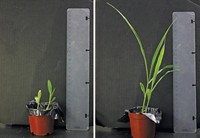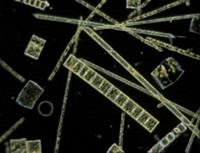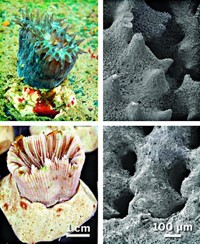Advertisement
Grab your lab coat. Let's get started
Welcome!
Welcome!
Create an account below to get 6 C&EN articles per month, receive newsletters and more - all free.
It seems this is your first time logging in online. Please enter the following information to continue.
As an ACS member you automatically get access to this site. All we need is few more details to create your reading experience.
Not you? Sign in with a different account.
Not you? Sign in with a different account.
ERROR 1
ERROR 1
ERROR 2
ERROR 2
ERROR 2
ERROR 2
ERROR 2
Password and Confirm password must match.
If you have an ACS member number, please enter it here so we can link this account to your membership. (optional)
ERROR 2
ACS values your privacy. By submitting your information, you are gaining access to C&EN and subscribing to our weekly newsletter. We use the information you provide to make your reading experience better, and we will never sell your data to third party members.
Environment
Ironing Out A Poison
Ecosystem remediation: Berkeley scientists propose iron to block methylmercury production in restored wetlands
by Charles Schmidt
September 20, 2010

A number of states have begun breaching dykes along their coasts to restore tidal wetlands that engineers once drained for farming and development. Although this practice brings back vital ecosystems, there's a hidden cost: During the restoration, inorganic mercury in drained wetland sediments can transform into methlymercury, the more toxic, bioavailable form of the metal. Now researchers from the University of California, Berkeley, report that they can limit methylmercury production by infusing the sediments with iron (Environ. Sci. Technol., DOI: 10.1021/es1018256).
"Tidal wetlands are hotspots for methylmercury," says David Sedlak, a professor in civil and environmental engineering at UC Berkeley. And the culprits are anaerobic bacteria. These microbes methylate mercury and then release the neurotoxic poison back into the water.
But bacteria can only absorb molecules through their cell membranes in a neutrally-charged form and inorganic mercury has a positive charge. The metal eventually sneaks into the cells, because the bacteria's natural metabolism reduces sulfate in seawater and generates sulfide, which can then bind mercury to create a neutral complex.
In earlier experiments, Sedlak and colleagues blocked this process in closed containers by infusing mercury-contaminated sediments with iron. Iron acted like a sponge; it soaked up sulfide and reduced mercury in the environment. "That shifts the system towards higher levels of inorganic mercury, which aren't bioavailable to bacteria," Sedlak says.
In the new research, Sedlak and his doctoral student, Patrick Ulrich, wanted to test their technique under more realistic conditions. They placed sediment cores taken from a tidal marsh into open aquaria. The scientists connected the tanks to reservoirs filled with synthetic seawater and used peristaltic pumps to simulate a tidal cycle. In some aquaria, the researchers planted live, wetland vegetation and in others they left the soil plant-less. Finally, they injected iron chloride solutions into the sediments.
After three days, Sedlak and Ulrich found that methylmercury levels in the surface water of plant-free sediments dropped by as much as 89%. Sediments with plants also showed significant declines, but the results were more variable, due to the influence of plant life on sediment chemistry, Sedlak says.
"This study for the first time shows that iron applications hold promise for decreasing mercury methylation under the complex conditions of wetlands restoration," Sedlak says.
Robert Mason, a professor in marine sciences at the University of Connecticut, in Groton, is still skeptical. He says that by limiting their analyses to surface water samples, the UC Berkeley team overlooked methylmercury levels in sediments, which may still remain "quite high."
Ulrich responds that surface waters are what control the export of methylmercury from tidal wetlands to the sea, where it's taken up by the fish that we eat: "Our goal here is to cut methylmercury loads coming from tidal wetlands into the ocean." He adds that field research will be needed to confirm results in real-world environments.





Join the conversation
Contact the reporter
Submit a Letter to the Editor for publication
Engage with us on Twitter